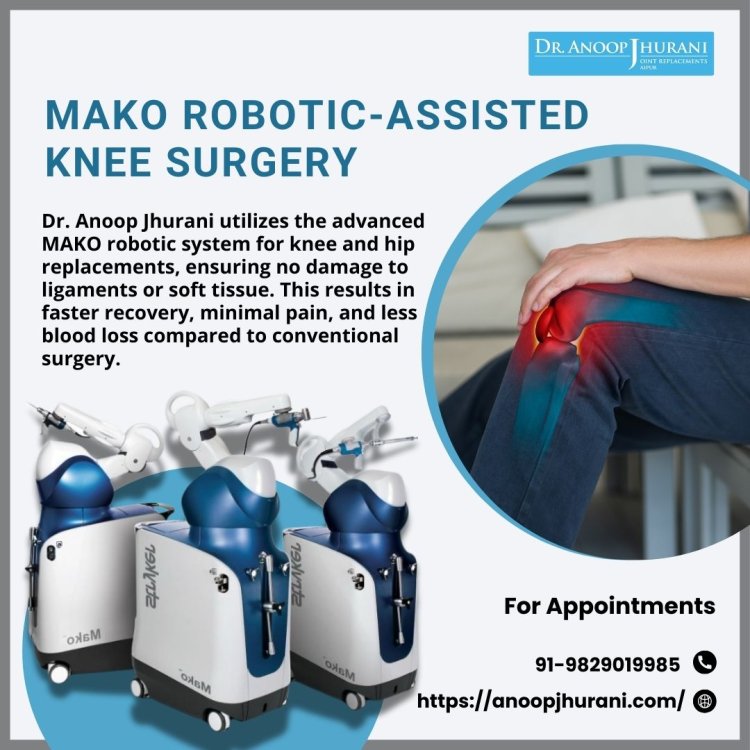Understanding the Components of Knee Replacement Implants: Materials and Precision
Dr. Anoop Jhurani is one of the knee & hip replacement doctors in Jaipur. He has performed over 12,000 successful knee and hip surgeries.
Share this Post to earn Money ( Upto ₹100 per 1000 Views )

Knee replacement surgery, or knee arthroplasty, is a highly effective solution for patients suffering from severe knee pain and reduced mobility, often caused by osteoarthritis. During the procedure, damaged portions of the knee are replaced with artificial implants designed to replicate the function of a healthy joint. The choice of implant materials and design is tailored to each patient’s unique needs, and the right selection plays a crucial role in the success of the surgery and the patient’s recovery.
Key Components of Knee Replacement Implants
Knee replacement implants consist of several key components, each serving a specific function in the artificial joint. The main parts include the femoral, tibial, and patellar components. These are designed to work together to mimic the natural movement of the knee while ensuring durability and comfort.
1. Femoral Component: The femoral component replaces the damaged surface of the femur (thigh bone). This part is typically made from metal alloys, such as cobalt-chromium or oxidized zirconium. These materials are chosen for their strength, biocompatibility, and wear resistance. The smooth, polished surface allows for fluid movement within the knee joint.
2. Tibial Component: The tibial component, which replaces the top of the tibia (shin bone), is usually made from a combination of metal and plastic. The metal tray, often crafted from cobalt-chromium or titanium, forms the base, while the upper part is made from polyethylene (a high-quality medical-grade plastic). The polyethylene inserts act as a spacer between the tibial and femoral components, allowing smooth and pain-free movement.
3. Patellar Component: The patellar component replaces the damaged kneecap (patella) and is generally made from polyethylene. This material provides a smooth, frictionless surface that helps the patella glide over the femoral component during movement. The patellar component is designed to improve the stability and functionality of the knee joint.
Advantages of Robotic Knee Replacement Surgery
Robotic knee replacement surgery, performed by Dr. Anoop Jhurani, takes the precision of knee replacement to the next level. Dr. Jhurani can perform knee replacements with unparalleled accuracy using the latest MAKO robotic system, ensuring optimal alignment and implant placement. This level of precision leads to numerous benefits for patients, including:
· Less damage to ligaments and surrounding tissues
· Minimal blood loss during the procedure
· Reduced post-operative pain
· Shorter hospital stays
· Faster recovery time
· Improved implant longevity due to accurate placement
· Lower risk of complications or revision surgery
Why Choose Dr. Anoop Jhurani for Knee Replacement in Jaipur?
As one of India’s most experienced orthopedic surgeons, Dr. Anoop Jhurani has performed over 12,000 knee and hip replacements, earning a reputation for excellence in robotic and computer-assisted surgeries. His expertise, combined with the advanced technology of robotic knee replacement, ensures patients experience less pain, a quicker recovery period, and long-lasting results.
Whether you need a partial or total knee replacement, or you’re considering bilateral knee surgery, Dr. Jhurani and his team in Jaipur are committed to providing the highest quality care and treatment. If you’re experiencing severe knee pain and want to explore your options, contact Dr. Anoop Jhurani—the best knee replacement doctor in Jaipur—and take the first step toward a pain-free, active life.














